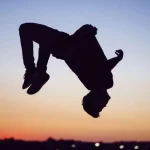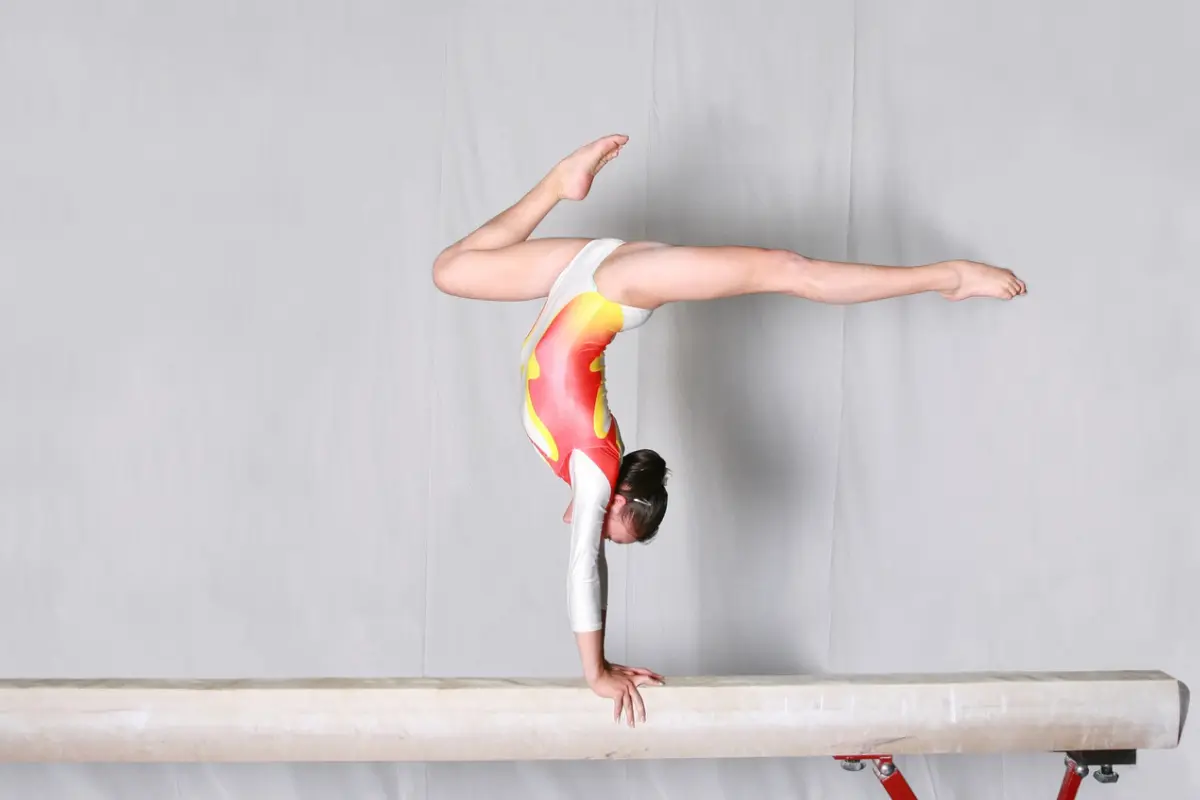In women’s artistic gymnastics, the floor exercise, distinguished as the fourth event in the Olympic sequence, offers gymnasts a unique showcase. Within a 12-meter square, athletes have 90 seconds to perform a complex array of acrobatic maneuvers, dance elements, and choreography.
Unlike their male counterparts, female gymnasts perform to music, allowing them to infuse the routine with personal flair and musical interpretation.
Let’s look at the top five challenging and crowd-pleasing skills in women’s floor gymnastics.
1. The Biles II – J Value
- Performed by: Simone Biles (USA), 2019 U.S. Championships
- Technical Description: Double salto backward tucked with three full twists (Triple Double Tuck)
The Biles II, often nicknamed the Triple Double, is considered the pinnacle of women’s floor tumbling. It consists of two backflips in a tuck position combined with three twists—a groundbreaking first in women’s gymnastics.
What makes it so difficult?
- Triple twist in two flips – Completing three twists in the air while also flipping twice requires extraordinary coordination.
- Height and airtime – Only explosive power can generate the hang-time needed to finish rotations safely.
- Blind landing – The gymnast doesn’t see the floor until the final moment, making precision vital.
With a J rating, the highest in the Code of Points, this skill is worth a full point by itself. It not only redefined what’s possible on floor but cemented Simone Biles as the sport’s ultimate innovator.
2. The Moors – I Value
- Performed by: Victoria Moors (CAN), 2013 World Championships
- Technical Description: Double layout with two full twists (Double Double Layout)
The Moors is one of the rarest skills in gymnastics. It requires a double backflip in layout position with two twists, a move so demanding that only a few women in history have performed it successfully.
Originally introduced in 2013 by Canadian gymnast Victoria Moors, this pass was groundbreaking for its time. Initially rated H, it was upgraded to I in 2022, making it the highest-valued layout pass in the women’s Code of Points.
Where the Biles II relies on tuck rotation speed, the Moors demands perfect body tension, as holding a layout position slows rotation and makes twisting even harder.
3. The Dos Santos II – H Value
- Performed by: Daiane dos Santos (BRA), 2008 World Championships
- Technical Description: Arabian double salto in layout position
The Dos Santos II is a signature skill of Brazilian star Daiane dos Santos, known for her explosive power and originality. This element combines an Arabian entry (a half-twist into a backward double salto) with a stretched body layout—an exceptionally rare variation.
When it first entered the Code of Points in 2008, it was given a G rating, but later upgraded to H due to its difficulty. Few gymnasts attempt it today because of the extreme control and timing required.
This pass symbolizes both innovation and national pride, as Daiane dos Santos became Brazil’s first world champion in gymnastics and left her legacy etched into floor exercise history.
4. The Chusovitina – H Value
- Performed by: Oksana Chusovitina (UZB), 1990s
- Technical Description: Double layout with a full twist
The Chusovitina is named after one of gymnastics’ greatest legends, Oksana Chusovitina, whose career spanned an incredible eight Olympic Games. The pass is a double layout with a full twist, requiring both power and precise twisting mechanics.
Initially classified with separate entries for full-in (twist in the first salto) and full-out (twist in the second salto), the skill was later merged into one element. It received an H rating in 2013, reflecting its technical difficulty.
While less common today, the skill is a reminder of Chusovitina’s incredible impact on gymnastics. Its enduring recognition shows just how far ahead of her time she was.
5. The Silivas – H Value
- Performed by: Daniela Silivaș (ROM), 1988 Seoul Olympics
- Technical Description: Double tuck with two full twists
The Silivas is perhaps the most iconic tumbling pass in women’s gymnastics. First introduced by Daniela Silivaș at the 1988 Olympics, it was revolutionary for its era and remains a staple in elite-level routines even decades later.
Originally rated G, the skill was upgraded to H in 2013 as the Code of Points evolved. Despite the rise of even harder elements, the Silivas remains a go-to opening pass for many top gymnasts because of its dramatic impact and high value.
What makes it so lasting? Its blend of difficulty, visual appeal, and competitive usability, challenging enough for elites but still achievable with the right mix of power and technique.
Difficulty Ladder (From Hardest to Easiest)
| Code Value | Skill Name | Gymnast Who Introduced It | Notes |
|---|---|---|---|
| J | Biles II | Simone Biles (USA) | Triple double tuck – hardest women’s floor skill |
| H → I | Moors | Victoria Moors (CAN) | Double double layout – rarest layout pass |
| G → H | Dos Santos II | Daiane dos Santos (BRA) | Arabian double layout – unique and extremely rare |
| H | Chusovitina | Oksana Chusovitina (UZB) | Double layout with full twist – powerful and risky |
| G → H | Silivas | Daniela Silivaș (ROM) | Double tuck with 2 twists – iconic and still common |






